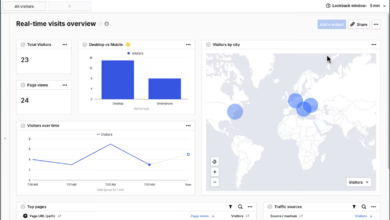
Secure data rooms and online document-sharing platforms have emerged as popular solutions for organizations and individuals to manage and exchange sensitive information. While these platforms often tout robust security features, mounting evidence, and data suggest that they provide weak document protection. This blog will examine the vulnerabilities and limitations of secure data rooms and online document-sharing platforms, shedding light on common risks and shortcomings.
Poor encryption
One of the primary concerns regarding certain data rooms and online document-sharing platforms is the adequacy of encryption methods employed to protect sensitive information. While encryption is a fundamental security measure, reports have highlighted instances where platforms have implemented weak encryption protocols, leaving documents susceptible to unauthorized access. Several high-profile data breaches have occurred, leading to severe consequences for organizations and individuals alike. These incidents undermine the trust and credibility of these platforms, raising questions about their commitment to document security.
Insufficient user authentication
User authentication is crucial for ensuring the security of documents within online platforms. However, there have been instances where these platforms need to implement robust authentication measures. Weak passwords, lack of multi-factor authentication, and vulnerabilities in login processes have been exploited by malicious actors, compromising document protection. Furthermore, inadequate access controls within these platforms may allow unauthorized individuals to gain access to confidential documents, putting sensitive information at risk.
While secure data rooms and document-sharing platforms often focus on external threats, internal risks pose a significant concern. Insider threats can occur when authorized users with access to confidential documents intentionally or unintentionally leak sensitive information. Reports have revealed cases where employees or individuals with legitimate access have misused or mishandled documents, leading to data breaches and privacy breaches. These incidents highlight the limitations of these platforms in protecting documents against internal threats.
Lack of granular controls
Adequate document protection should include granular control over shared documents to prevent unauthorized access and ensure data integrity. However, secure data rooms and online document-sharing platforms may offer limited control options, making it challenging to manage permissions, track document activity, and prevent unauthorized sharing or modifications. Insufficient control mechanisms reduce the effectiveness of these platforms in protecting documents against unauthorized usage and tampering as users cannot achieve the correct level of protection at different classification levels.
Compliance struggles
Organizations operating in regulated industries, such as healthcare or finance, face additional challenges when using secure data rooms and online document-sharing platforms. Compliance with data protection regulations, such as the Health Insurance Portability and Accountability Act (HIPAA) or the General Data Protection Regulation (GDPR), requires stringent security measures.
However, some platforms may not adequately address these regulatory requirements, leaving organizations vulnerable to legal and reputational risks. While encryption is a fundamental aspect of document protection, the overall security infrastructure of secure data rooms and online document-sharing platforms is often overlooked. Recent studies have exposed the shortcomings in security controls, such as outdated software, unpatched vulnerabilities, and inadequate intrusion detection systems. Such weaknesses increase the risk of unauthorized access and compromise the integrity of stored documents, rendering the encryption measures insufficient in mitigating potential threats.

Bad development practices
Secure data rooms and online document-sharing platforms may rely on third-party services and technologies, introducing additional risks to document protection. In some instances, platforms outsource critical functions, such as data storage or user authentication, to external providers. This is not always communicated to the customer and this dependency exposes sensitive documents to potential supply chain vulnerabilities. The security practices and protocols of these third parties may not align with the desired level of protection, making the overall document-sharing process susceptible to compromise.
No proactive security posture
Recent trends show a surge in sophisticated cyberattacks, such as ransomware and zero-day exploits, targeting secure data rooms and online document-sharing platforms. These attacks exploit vulnerabilities in the platforms’ security infrastructure, highlighting the need for continuous monitoring and proactive defense mechanisms.
Without regular updates and robust cybersecurity practices, these platforms become an easy target for malicious actors, potentially leading to data breaches and document compromise. Platforms looking to cut costs may not do this sufficiently, and there is no way for customers to check whether the provider is testing its platform effectively.

Lack of attention to metadata
In addition to the content of documents, the metadata associated with files can also pose significant risks. Metadata includes information such as document creation dates, author names, and revision histories. Secure data rooms and online document-sharing platforms may inadvertently leak metadata, compromising the privacy and confidentiality of shared documents. This unintended disclosure of metadata can provide valuable insights to adversaries, enabling them to piece together sensitive information or track document activities.
Poor consideration of user error
Document protection is also dependent on the knowledge and behavior of users. Insufficient user awareness and training contribute to document vulnerabilities within secure data rooms and online document-sharing platforms. Users may inadvertently fall victim to social engineering attacks, such as phishing or impersonation attempts, compromising their login credentials, or granting unauthorized access to documents. Educating users about best practices and potential risks is crucial for maintaining a secure document-sharing environment. However, as user error and intentional leaks are impossible to eliminate entirely, it may be necessary to use digital rights management and secure watermarking solutions to deter intentional sharing and safeguard against accidental ones.
Lack of transparency
To ensure the integrity of document sharing, it is essential to have a transparent and auditable system. However, secure data rooms and online document-sharing platforms often lack comprehensive logging and auditing capabilities. This limitation hampers the ability to trace and investigate security incidents, identify unauthorized access attempts, or hold individuals accountable for mishandling confidential information. The absence of robust auditing mechanisms undermines overall document protection and makes it challenging to enforce accountability.
Ineffective access controls
Access controls play a crucial role in safeguarding documents, ensuring that only authorized individuals can view or modify sensitive information. However, evidence suggests that some secure data rooms and online document-sharing platforms offer limited or inadequate access control mechanisms. Many platforms have been found to have shortcomings in permission management which allow unauthorized users to gain access to confidential documents or grant excessive privileges to individuals with legitimate access.
Slow crisis response
In the event of a security incident or data breach, a swift and effective response is critical to mitigate the impact and protect sensitive documents. However, evidence indicates that some secure data rooms and document-sharing platforms lack comprehensive incident response and recovery procedures. Some platforms may lack predefined processes, have delays in the notification, and demonstrate inadequate measures to contain and recover from security breaches.
Lack of clarity surrounding data residency
Organizations operating in different jurisdictions often face challenges related to data residency and sovereignty. Evidence indicates that certain secure data rooms and document-sharing platforms store data in locations that may not align with an organization’s legal or regulatory requirements. This lack of control over data residency raises concerns about compliance with data protection laws, leaving organizations vulnerable to legal and reputational risks.
Conclusion
Despite the widespread adoption of secure data rooms and online document-sharing platforms, evidence and data suggest they provide weak document protection. Inadequate encryption, vulnerabilities in user authentication, insider threats, limited control over shared documents, and compliance concerns collectively contribute to the vulnerability of sensitive information. Organizations and individuals must be aware of these shortcomings and take additional precautions when utilizing such platforms or consider alternative solutions such as PDF DRM that prioritize robust document protection.



